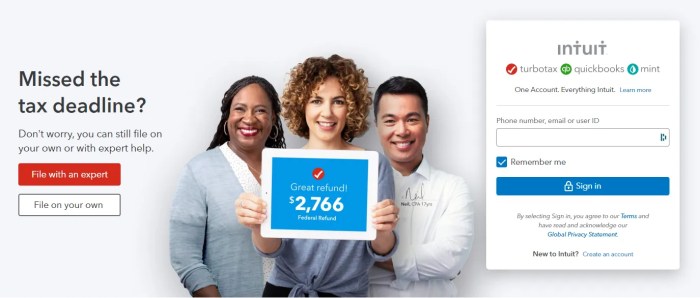Sales use tax software is a critical tool for businesses operating in jurisdictions with sales and use taxes. It streamlines the often complex process of calculating, remitting, and tracking these taxes, helping companies avoid penalties and maintain compliance. This guide dives deep into the world of sales use tax software, exploring its features, benefits, and how it can significantly impact your bottom line.
Understanding Sales and Use Taxes
Before we delve into software, it’s essential to grasp the fundamentals of sales and use taxes. Sales tax is typically collected by businesses from their customers on taxable sales. Use tax, on the other hand, is a tax on the use or consumption of goods and services that are not subject to sales tax. This applies particularly to businesses purchasing goods or services for use in their operations, as opposed to resale.
Understanding the nuances of these taxes in your specific region is crucial.
Key Differences between Sales and Use Tax, Sales use tax software
- Sales Tax: Collected at the point of sale from customers.
- Use Tax: Paid by the business when they use items not subject to sales tax.
- Jurisdictional Variation: Rules and rates vary significantly by state and local government.
Features of Effective Sales Use Tax Software
A robust sales use tax software solution should go beyond simple calculations. Look for these features:
Tax Rate Management
The software should allow for easy updates and management of fluctuating tax rates across various jurisdictions. This is essential for accuracy and compliance.
Inventory Tracking
Integrate inventory tracking to automatically calculate taxes based on item classifications and sales transactions. This helps prevent errors and ensures tax accuracy for each sale.

Source: taxcloud.com
Reporting and Compliance
The software should provide comprehensive reports, enabling businesses to monitor tax liabilities, track remittances, and fulfill compliance obligations. These reports should be easily exportable for audits and other purposes.
Integration Capabilities
Seamless integration with existing accounting software (e.g., QuickBooks, Xero) is crucial for efficient data flow and reduced manual entry. This streamlines the entire tax process.
Multi-Jurisdictional Support
For businesses operating in multiple states or countries, the software must handle the complexities of different tax codes, rates, and regulations across these locations. This is essential for accuracy and compliance.

Source: rahulogy.com
User-Friendliness
Intuitive design and user-friendly interfaces are critical for ease of use and minimal training time. This is important for both accounting professionals and general staff members.
Benefits of Utilizing Sales Use Tax Software
Beyond compliance, sales use tax software offers numerous advantages:
- Accuracy and Efficiency: Reduces manual errors and speeds up tax calculations.
- Cost Savings: Prevents penalties and interest charges associated with late or incorrect tax payments.
- Improved Compliance: Streamlines the process of staying compliant with evolving tax regulations.
- Time Savings: Automates tasks, freeing up valuable time for other business activities.
Choosing the Right Software
Consider these factors when selecting sales use tax software:
- Budget: Different software solutions cater to various price points.
- Business Size: Scale of operations influences the necessary features.
- Technical Expertise: Ease of use and required training should be considered.
FAQ
Here are some frequently asked questions about sales use tax software:
- Q: What is the best sales use tax software for small businesses?
- A: The best software depends on the specific needs of the business, but some reputable options include [insert links to reputable software vendors].
- Q: How do I choose the right software for my company?
- A: Evaluate your budget, business size, and technical expertise. Consider features such as multi-jurisdictional support and integration capabilities.
- Q: How do I avoid penalties and interest charges when using sales use tax software?
- A: Regularly update your software with tax rate changes, ensure accurate data entry, and file on time.
Conclusion: Sales Use Tax Software
Sales use tax software is an essential tool for any business operating in a jurisdiction with sales and use taxes. By streamlining the process, businesses can ensure accuracy, enhance compliance, and reduce the risk of penalties. Investing in the right software is a smart business decision that can save you time and money in the long run.

Source: techbeloved.com
Call to Action
Ready to take control of your sales tax obligations? Explore our selection of trusted sales use tax software solutions. Click here to learn more and request a demo.
Disclaimer: This article is for informational purposes only and does not constitute financial or legal advice. Consult with a qualified professional for specific guidance related to your business needs.
FAQ Overview
What types of businesses benefit most from using sales use tax software?
Businesses with significant sales across multiple states, those involved in e-commerce, and companies operating in complex tax jurisdictions will find sales use tax software invaluable. It helps them maintain accurate records and avoid potential tax issues.
How does sales use tax software handle different tax rates across various states?
The software usually allows for the input of specific tax rates for each applicable jurisdiction. It then automatically calculates the correct tax amount based on the transaction details.
Can I customize the reports generated by the software?
Many sales use tax software solutions offer customizable reporting options. This allows users to tailor reports to their specific needs and requirements.
What are the typical costs associated with sales use tax software?
Pricing varies depending on the features offered and the volume of transactions. Many software providers offer tiered pricing plans, allowing businesses to choose a package that fits their budget and needs.